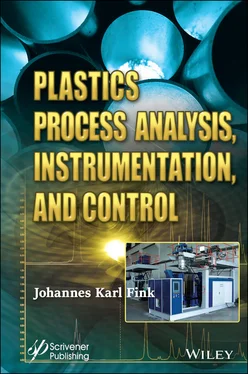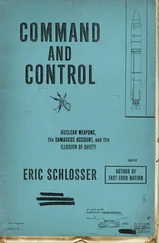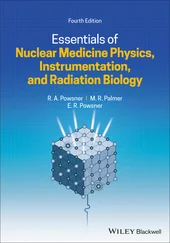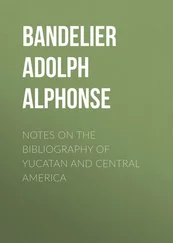25. S.-C. Chen, W.-R. Jong, and J.-A. Chang, Journal of Applied Polymer Science , Vol. 101, p. 1174, 2006.
26. J. Li, S. Yang, L.-S. Turng, W. Zheng, and S. Jiang, e-Polymers , Vol. 17, p. 71, 2017.
27. S. Liparoti, V. Speranza, R. Pantani, and G. Titomanlio, Journal of The Electrochemical Society , Vol. 166, p. B3148, 2019.
28. S. Liparoti, G. Landi, A. Sorrentino, V. Speranza, M. Cakmak, and H.C. Neitzert, Advanced Electronic Materials , Vol. 2, p. 1600126, 2016.
29. T.M. The Uyen, N.Truong Giang, T.T. Do, T.Anh Son, and P.Son Minh, Materials , Vol. 13, p. 2855, June 2020.
30. K. Dong-Hak, K. Myung-Ho, and Y.H. Chun, Journal of Injection Molding Technology , Vol. 5, p. 229, 2001.
31. S. Gao, Z. Qiu, Z. Ma, and Y. Yang, The International Journal of Advanced Manufacturing Technology , Vol. 92, p. 831, 2017.
32. P. Xie, H. Yang, Y. Zhao, W. Yu, L. Cheng, W. Yang, H. Yan, and J. Tan, Applied Thermal Engineering , Vol. 122, p. 19, 2017.
33. H. Yang, G. Yilmaz, G. Han, M. Eriten, Z. Zhang, S. Yu, M. Shi, H. Yan, W. Yang, P. Xie, and L.-S. Turng, Applied Thermal Engineering , Vol. 167, p. 114791, 2020.
34. P. Guerrier, G. Tosello, K.K. Nielsen, and J.H. Hattel, The International Journal of Advanced Manufacturing Technology , Vol. 85, p. 643, 2016.
35. P. Guerrier, K. Kirstein Nielsen, S. Menotti, and J. Henri Hattel, Finite Elements in Analysis and Design , Vol. 110, p. 1, 2016.
36. H.-J. Lee, N.-H. Jang, and K. Park, Journal of Mechanical Science and Technology , Vol. 33, p. 5375, 2019.
37. G. Llewelyn, A. Rees, C.A. Griffiths, and S.G. Scholz, Journal of Cellular Plastics , Vol. 56, p. 0021955X20912207, 2020.
38. S. Gong, M. Yuan, A. Chandra, H. Kharbas, A. Osorio, and L.S. Turng, International Polymer Processing , Vol. 20, p. 202, 2005.
39. M. Shimizu and J. Kudamatsu, Mold-cooling system and mold-cooling method, US Patent Application 20 160 250 685, assigned to Matsui Seisakusho KK, September 01, 2016.
40. J. Xu and D. Pierick, Journal of Injection Molding Technology , Vol. 5, p. 152, 2001.
41. J. Hou, G. Zhao, G. Wang, G. Dong, and J. Xu, Materials & Design , Vol. 127, p. 115, 2017.
42. S.Y. Yang, S.J. Liou, and W.N. Liou, Advances in Polymer Technology , Vol. 16, p. 175, 1997.
43. L.S. Turng, Advances in Polymer Technology , Vol. 14, p. 1, 1995.
44. E. Haberstroh and H. Wehr, Macromolecular Materials and Engineering , Vol. 284-285, p. 76, 2000.
45. B. Li, G. Zhao, G. Wang, L. Zhang, and J. Gong, Polymer Degradation and Stability , Vol. 156, p. 75, 2018.
46. B. Li, G. Zhao, G. Wang, L. Zhang, J. Hou, and J. Gong, International Journal of Biological Macromolecules , Vol. 129, p. 171, 2019.
47. M. Zhao, X. Ding, J. Mi, H. Zhou, and X. Wang, Polymer Degradation and Stability , Vol. 146, p. 277, 2017.
48. J. Ni, K. Yu, H. Zhou, J. Mi, S. Chen, and X. Wang, The Journal of Supercritical Fluids , Vol. 158, p. 104719, 2020.
49. S.J. Liu, International Polymer Processing , Vol. 24, p. 315, 2009.
50. D. Oliveira, A. Mateus, P. Carreira, F. Simões, and C. Malça, Procedia Manufacturing , Vol. 12, p. 141, 2017. International Conference on Sustainable and Intelligent Manufacturing, RESIM 2016, 14-17 December 2016, Leiria, Portugal.
51. K. Himasekhar, L.S. Turng, V.W. Wang, H.H. Chiang, and K.K. Wang, Advances in Polymer Technology , Vol. 12, p. 233, 1993.
52. X. Liu, Y. Pan, G. Zheng, H. Liu, Q. Chen, M. Dong, C. Liu, J. Zhang, N. Wang, E.K. Wujcik, T. Li, C. Shen, and Z. Guo, Macromolecular Materials and Engineering , Vol. 303, p. 1800035, 2018.
53. C.-C. Cheng and S.-T. Hung, Molding machine, system comprising the same, and method for forming plastic piece, US Patent 9 724 856, assigned to Taiwan Green Point Enterprise Co. Ltd., August 08, 2017.
54. P.C. Regan, H. Lim, D. Lee, J. Kang, and C. Jeong, Adjustable conveyance curing system, US Patent Application 20 190 246 461, assigned to Chang Shin Inc., Nike Inc., August 08, 2019.
55. B. Roth, M.-Y. Zhou, and D. Drummer, International Polymer Processing , Vol. 34, p. 425, 2019.
56. H.-C. Liao, Mold thermal controlling device and hot press system, US Patent 10 046 486, assigned to Hao-Chieh Liao, August 14, 2018.
57. Y. Kawaguchi, K. Yamaga, H. Takahata, H. Oyake, and Y. Sakai, Stamper, mold system, recording medium substrate, recording medium, optical disc substrate, optical disc, and method for producing stamper, US Patent 6 835 435, assigned to TDK Corp., December 28, 2004.
58. A. Naito, K. Furuki, H. Ito, and K. Yakemoto, Method for manufacturing microscopic structural body, US Patent 9 744 698, assigned to Japan Steel Works Ltd., August 29, 2017.
59. Y. Hirai, T. Yao, H. Kawata, N. Niimi, and Y. Tsukamoto, Structure of micro/nanoconstruction, bioinspection chip utilizing the same and process for producing them, WO Patent Application 2 008 059 848, assigned to Japan Science and Technology Agency, Osaka Prefecture University Public Corporation, May 22, 2008.
60. Y. Hirai, H. Kawada, N. Niimi, and T. Yao, Method for producing structure having nano-formation and micro-formation, JP Patent Application 2 010 030 045, assigned to Japan Science & Technology Agency, Osaka Prefecture Univ., February 12, 2010.
61. K. Murao, Micro-fine resin structure, and production method therefor, JP Patent Application 2009 184 275, assigned to Hitachi Chem Co. Ltd., August 20, 2009.
62. T.M. Letcher, ed., Plastic Waste and Recycling , Academic Press, 2020.
63. N. Rudolph, R. Kiesel, and C. Aumnate, Understanding Plastics Recycling: Economic, Ecological, and Technical Aspects of Plastic Waste Handling , Carl Hanser Verlag GmbH & Company KG, München, DE, 2nd edition, 2020.
64. W.E. Carner, Method and system for recycling plastics, US Patent 7 892 500, assigned to CRES LLC, February 22, 2011.
65. J.R. Jambeck, R. Geyer, C. Wilcox, T.R. Siegler, M. Perryman, A. Andrady, R. Narayan, and K.L. Law, Science , Vol. 347, p. 768, 2015.
66. E. van Sebille, S. Aliani, K.L. Law, N. Maximenko, J.M. Alsina, A. Bagaev, M. Bergmann, B. Chapron, I. Chubarenko, A. Cózar, P. Delandmeter, M. Egger, B. Fox-Kemper, S.P. Garaba, L. Goddijn-Murphy, B.D. Hardesty, M.J. Hoffman, A. Isobe, C.E. Jongedijk, M.L.A. Kaandorp, L. Khatmullina, A.A. Koelmans, T. Kukulka, C. Laufkötter, L. Lebreton, D. Lobelle, C. Maes, V. Martinez-Vicente, M.A.M. Maqueda, M. Poulain-Zarcos, E. Rodríguez, P.G. Ryan, A.L. Shanks, W.J. Shim, G. Suaria, M. Thiel, T.S. van den Bremer, and D. Wichmann, Environmental Research Letters , Vol. 15, p. 023003, February 2020.
67. Wikipedia contributors, Ekman layer — Wikipedia, the free encyclopedia, https://en.wikipedia.org/w/index.php?title=Ekman_layer&oldid=964972319, 2020. [Online; accessed 28-August-2020].
68. V.W. Ekman, Arkiv för Matematik, Astronomi och Fisik , Vol. 2, p. 1, 1905.
69. J.C. Prata, J.P. da Costa, I. Lopes, A.C. Duarte, and T. Rocha-Santos, Science of The Total Environment , Vol. 702, p. 134455, 2020.
70. T.W. Kao, F.-S. Pan, and D. Renouard, Journal of Fluid Mechanics , Vol. 159, p. 19, 1985.
71. T. Hibiya, Journal of the Oceanographical Society of Japan , Vol. 46, p. 21, 1990.
72. F.J. Tapia, J. Pineda, F.J. Ocampo-Torres, H.L. Fuchs, P.E. Parnell, P. Montero, and S. Ramos, Continental Shelf Research , Vol. 24, p. 1573 , 2004.
73. J.C. Astudillo, M. Bravo, C.P. Dumont, and M. Thiel, Aquatic Biology , Vol. 5, p. 219, 2009.
74. S.A. Thorpe, Annual Review of Fluid Mechanics , Vol. 36, p. 55, 2004.
Читать дальше












